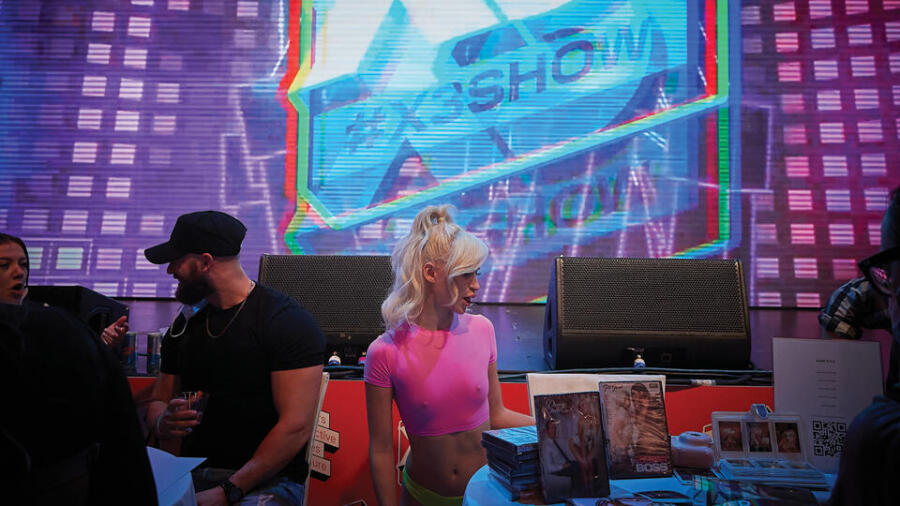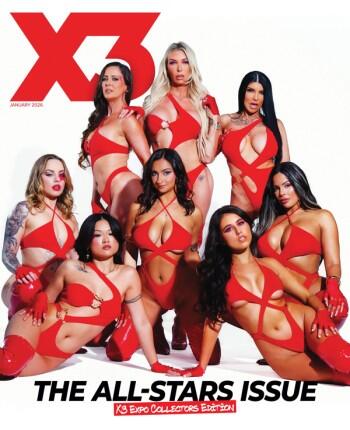There is a fine art to determining which merchandise will work best for models and performers at live events like X3 Expo, Exxxxotica and the like. To make it worth your while, you really have to consider four things: the event, your audience, your budget and your goals. To that end, here’s the skinny on what merch works best as your fans gather around your table and you hawk those finest of wares.
A few years ago, there were only a handful of options for event merchandise, including posters, little plastic frisbees, autographed photos and maybe some logo golf balls. Today, there is no end to how creative you can be. Posters are much more affordable now and technology has provided us the opportunity to brand almost anything with an image or your logo. But keep this in mind: just because they make it in your size, it doesn’t mean you should wear it. What I mean is that not all merchandise is good for live events.
Understand what the event is and who the attendees are before you start buying your merch inventory.
Planning Ahead
Let’s start with the two main decision points on what merch to have, because without a “why” the “what” is less clear:
1 • Your Goals
If you’re planning on having merchandise at your table or booth, then you’ve already invested in your appearance by securing the space. Now ask yourself, what’s the reason you’re willing to spend two or three days on your feet, shaking hands, taking a zillion pictures, fending off fanatical fans and generally exhausting yourself? It’s either about self-promotion or income, right? It could certainly be a combination of both, but it has to be one or the other at a minimum.
2 • Your Budget
Think about this: are you simply going to give items away to people that visit your spot, to increase brand awareness, or do you plan on setting up a table to sell your merchandise and make a few bucks? That will impact what budget you’re willing to spend.
Pick the Merch You Want to Give Away
If you’re giving items away, the first thing you have to consider is the size of the audience. Look at the event history to get an idea of how many attendees were on hand at previous shows. You can also ask event organizers what the attendee projections are. You should also consider the location and dates. All these factors combined can help you come up with an educated estimate of how many giveaway items you might need, and that directly affects your merch spend.
If you need 1,000 giveaway items, you’re going to spend anywhere from $750 to $2,000-plus for freebies. Also keep in mind that about 25% of your freebie items are going to wind up in the trash or on the event floor. That’s just the reality of fandom. People will take whatever you hand them; it doesn’t mean they’re going to keep it.
For freebies, I always look towards offering useful items like bottle openers, keychains, koozies and postcards; postcards are really the perfect giveaway, as you can include a photo, bio info, social media links and even a QR code. There really is no end, though, to how creative you can be with them and some merch providers can get you 1,000 full-color, double-sided postcards for less than $300.
Pick the Merch You Want to Sell
If you are looking to earn money by selling merch, there are some items that will definitely work better than others, and anything that can be autographed is a major plus, including posters, 8x10 photos, dog tags, two-sided keychains, tabletop photos and coffee mugs. You can easily sign all these items — and fans will buy an autographed item much faster than something not autographed. With the dog tags and keychains, you can sign the back of the item without a problem.
Consider how you’re going to accept payment. Cash is always good, but be prepared to make change. Credit card is now the preferred method, with services like Square or Sumup.com being solid.
Other things to have on hand include a supply of sharpies in different colors for autographs, hand sanitizer, comfortable shoes, plenty of water, perhaps some snacks and someone to watch your booth or table for bathroom breaks.
Determining the Event & Audience
Understand what the event is and who the attendees are before you start buying your merch inventory. I’ve seen it happen many times that a performer orders merch but then discovers it can’t be sold on the event floor.
In most cases, it comes down to nudity or not. Most events will make it a point to prohibit nude items on the event floor, but a calendar or magazine with a non-nude cover and nude photos inside is usually OK. Of course, that prohibition doesn’t keep a handful of performers from testing the rules. My advice is: don’t test the rules, as you might not be invited back for day two or for future events.
Also, exchanging merch isn’t just about trade shows and big fan expos. An event can be as simple as dancing at the Bada Bing or doing a live promo; anywhere you can connect with fans and hand out or sell merchandise can be considered an event.
Regardless, as you identify the attendees, ask yourself if they are purely fans or other industry people. Never sell merch at an industry-centric event, as those are more about networking and building bridges. If the attendees are fans, think about the demographics that might attend. Are you expecting the majority of visitors to be men on their own or folks accompanied by their significant other? Try to have merch on hand that could appeal to both sexes. Women buy merch too!
Generally, you don’t have to spend a fortune on merch. 200 Keychains goes a long way, but I would recommend spreading your merch dollars across different types of products no matter your plans. For instance, instead of 200 posters or 100 dog tags, think about lowering the total numbers and having a more diverse array of products. You can do posters, dog tags, key chains and coffee cups in smaller quantities and appeal to more people without breaking the bank.
Danny Ferretti has over 25 years in the marketing industry and is the co-founder of GFE Model Services and FanGear.vip, a company that specializes in collectible calendars, branded merchandise and other model-centric printed products. For more information, contact sales@gfemodelservices.com or visit GFEModelServices.com.





